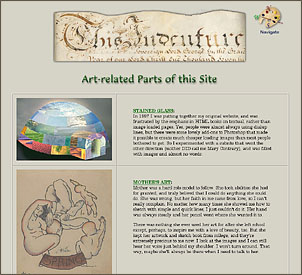wall which divided their adjoining gardens. Having made a rendezvous at the
tomb of Ninus, in the necropolis outside the city, Thisbe arrived first on the spot,
where she encountered a lioness which had just killed an ox, and in her flight while
flying from the dreaded beast dropped her garment, which the lioness tore to pieces.
When Pyramus reached the tomb he discovered the robe, torn and covered with the blood
of the ox, and supposing his mistress to have been killed and devoured, he, in despair, killed himself.
Thisbe, having regained her courage, returned only to find her lover dead, whereupon she too
committed suicide. Edouard Paupion, the painter of "Thisbe,"
was born at Dijon and is a pupil of J.L. Gerome. His genre pictures and portraits are highly
esteemed and his historical and romantic subjects always well composed and excuted.
The "Evening" of W.A. Bouguereau is a companion
picture to his "Morning," which has already been given in his work, and like it is one of the artist's
most graceful and tenderly sentimental works. The original, like its companion,
is in an American collection.
Edouard Bernard Debat-Ponsan
is a favorite French artist, born at Toulouse, and graduated out of the studio of Alexandre Cabanel.
Portraits and idyllic subjects like "Spring Flowers," a wood nymph who has been gathering
wild flowers, are his specialties. He was first medalled in 1874 and has
been a member of the Legion of Honor since 1881.
In "Aspasia"
Nathaniel Sichel presents a characteristic impersonation of the famous Athenian Woman,
the wife of Pericles, and the most learned woman of antiquity, from whom Socrates
himself did not disdain to take advice.
Leon Perrault's picture shows a nymph
Back Forward
Chapter 9 Text
Georges Lefebvre
|
|





![]() Copyright © 2007, Mary S. Van Deusen
Copyright © 2007, Mary S. Van Deusen